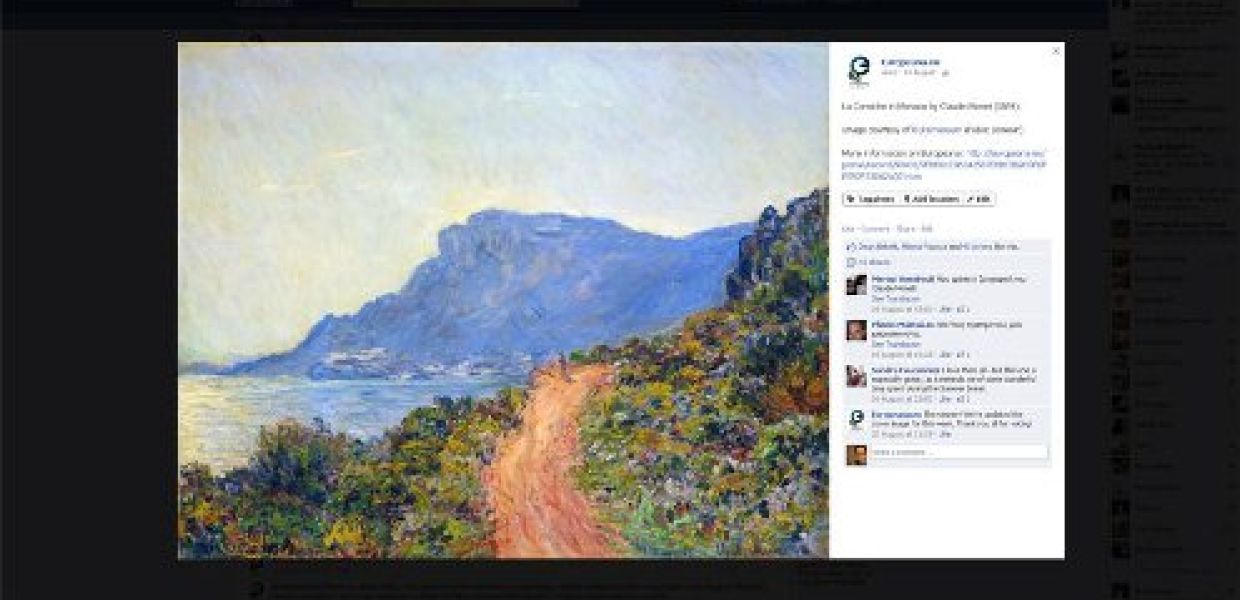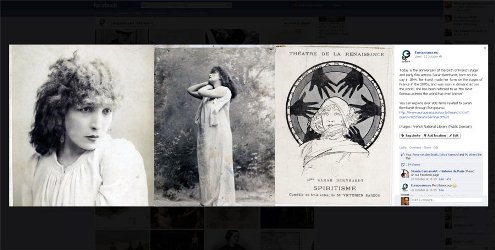Why we’ll be sharing more images on Facebook in 2013

If there’s one thing we’ve learnt from Facebook in 2012, it's that sharing images significantly increases engagement, impressions and the overall reach of your content.
“History is a gallery of pictures in which there are few originals and many copies.” - Alexis de Tocqueville (1805 – 1859)
Alexis de Tocqueville, the French political thinker and historian best known for the classic French text Democracy in America might have been around over 100 years ago, but his quote can not be more relevant in today’s digital world which is driven by self-expression online.

This image remix of three different public domain images from the French National Library achieved 99 likes and 114 unique shares on Facebook.
We’re not new to Facebook at Europeana. In fact, we’ve been using it since 2008. However, until recently we were only sharing text and link-based content. For example, a link to a blog post with short description that, when clicked, takes the users to more information on the blog, accompanied by images. This is perfectly fine, however by tweaking this process a little, we’ve noticed engagement indicators increase significantly.

We regularly engage our followers with a collection of nice public domain images from Europeana and ask them to vote for their favourite. The image with the most votes is used as the new cover image (the big image at the top of a page) on our profile.
Recently, we have begun to shift content out of the blog, exhibitions and portal to create an immersive experience on Facebook. By creating galleries on Facebook, we’re able to engage users directly on the platform through liking, commenting and sharing – key indicators of measurable engagement. Sharing content this way may in turn decrease referral traffic, but engagement metrics are now skyrocketing on Facebook. This begs the question, is it really important where we engage users, as long as we are?
We’ve learnt that providing a high quality image with a description and link offers more context and therefore attracts twice as many end-users when compared with sharing only text/link-based content. It has also been important to identify the ideal time to engage users on our page to ensure that the engagement levels remain high. From our experience, posts published between 11:00 and 12:30 generate the highest number of likes, comments and shares.
Between January and November 2012, we published 228 posts on Facebook with 170 of those being text/link-based posts and 49 image-based. A text/link-based post on average receives 154 engagement indicators (the number of unique users who clicked anywhere on the posts), while an image-based one racks up an average of 305.
So by simply increasing the number of images we share in 2013, we’ll be significantly increasing the number of end-users we engage.
What are your experiences with Facebook pages? Leave us a comment below. We also want to hear from you if you are interested in joining us in curating collections on Facebook and other social media platforms in 2013.
